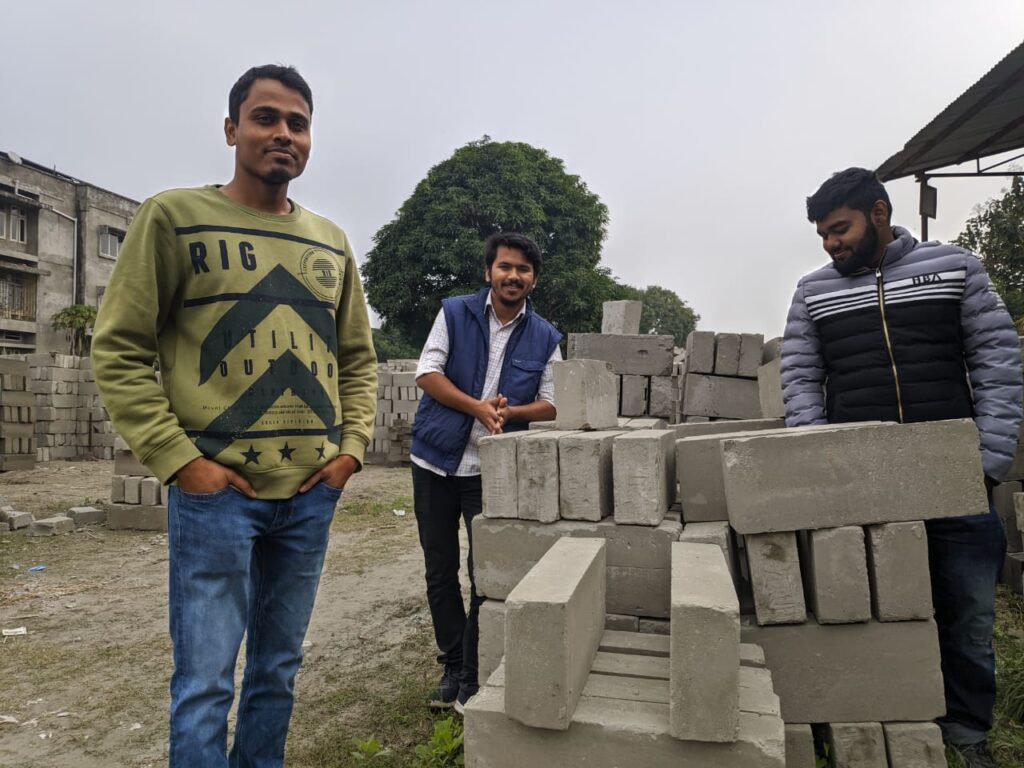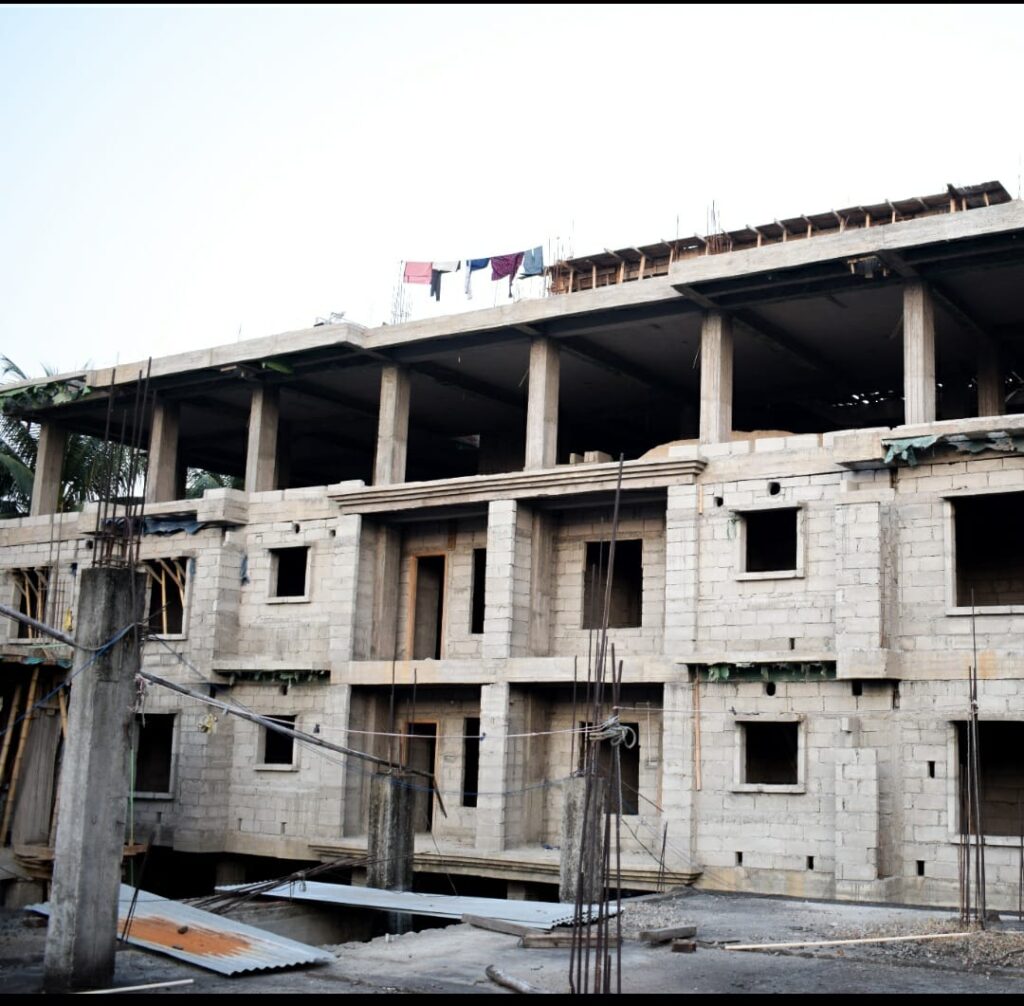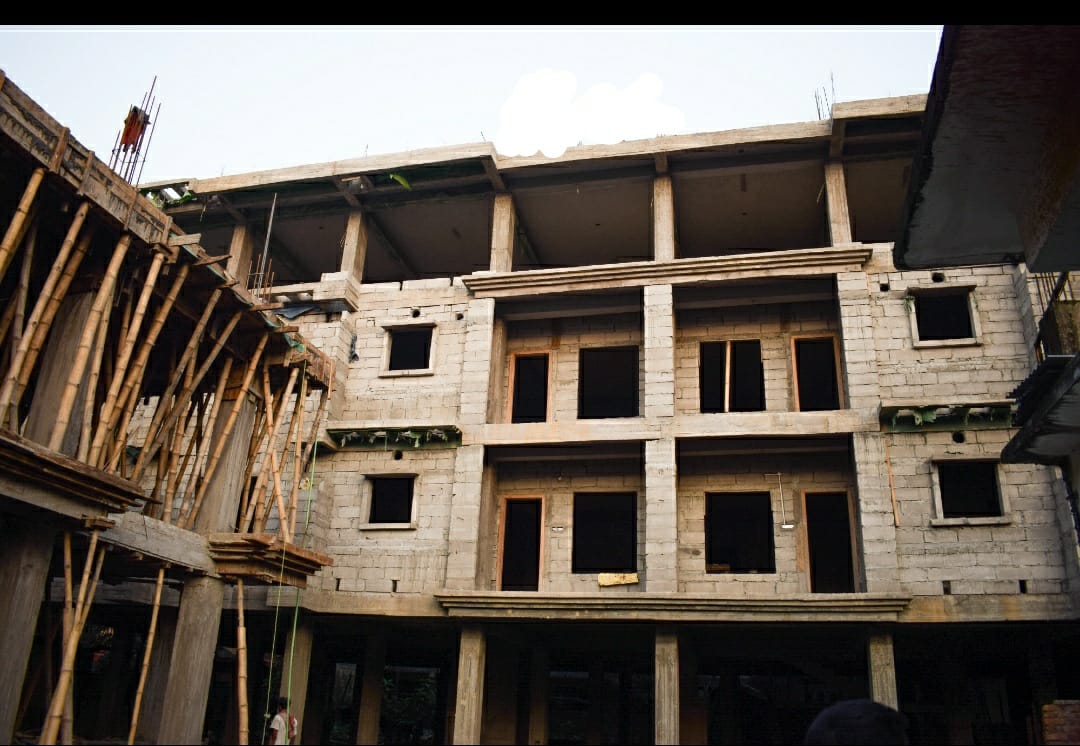With a growing trend of green architecture, Zerund Bricks, a startup from Assam has revolutionised the bricks used in construction. Started by three friends, David Gogoi, Rupam Choudhury and Mousam Talukdar, Zerund creates eco-friendly bricks made of fly ash, cement, organic chemicals and waste plastic. These bricks are not only eco friendly but thermal insulation of these bricks is more than the normal red bricks. From Production of 200-250 Bricks daily to a Production 2,000 Bricks per Day, Zerund Bricks are the game changers in the construction sector.
One of the partners, David Gogoi spoke to the EarthView and said, “As the global warming or the global pollution rates are increasing day by day, various things are directly impacting the whole environment like the red bricks. A huge amount of CO2 is emitted from the production of one red brick in the environment. So, it would create huge pollution in the environment and ultimately, we might not be the direct sufferers but the people born after say, 2-3 generations will face a severe impact of this. If something is not done now, we don’t think the world would be able to survive for long. Therefore, this concept was born to bring that much-needed change.”

The construction sector is one of the most polluting sectors in the world and Gogoi believes that if more and more buildings start using the eco-friendly bricks, there would be a definite change in reducing the pollution of the country. He said, “The Assam Secretariat have used our bricks and our slurry was used on the top of those buildings. The middle portion of the building is free since they are atrium kind of buildings. However, they encountered a problem that the buildings become too hot during the hot summer days. So, they have used our bricks on the top of the slab, which keeps the buildings cool.”
He added, “The GDP is also affected by the construction sector. So, the construction sector has a huge role to play both in the environment and the economy. Economically, we have been able to provide a good standard of living to modern families including us as founders and the amount of plastic being used will also affect the environment in the future.”
Anything that is done keeping in mind the environmental aspects of it cannot be done in simpler ways. From experimentations to finally growing into a full business that supports the environment, the road to success must not have been easy. Gogoi recalled, “Basically, this was our college project while we were studying in the Assam Engineering College. During our final year of Engineering, we were trying to do a project on waste material and do something in the civil engineering domain. So, we thought of making some building materials with the waste product. The building material that struck our minds was the brick. At first, we started with the initial trials. The initial trials were to fully shed off the plastic and then to mix it with sand. Some amount of positivity was there with this solution but we found that it was not doing any good to the environment, the product eventually was also not that good. Almost after 6 to 7 trials, we finally found out a solution to mixing the plastic in a very fine manner. Then we mixed it with fly ash, cement and some other organic chemicals. Finally, we found that the product came out to be good.”
According to David, the focus was always to give more to the customers in a good budget, “Even though we use plastic, we mix it in such a way that the fire resistance is very good. Like, the normal red brick has a fire resistance of 4 hours to 4 and a half hours, our bricks have a fire resistance of more than 6 hours”, added Gogoi. He also mentioned that the costing of these bricks is 10% to 15% cheaper than the normal red brick. Therefore, it became a huge game-changer in the market, because in a market like that of India, the cost is one of the most important factors. A cheaper alternative, mostly gains good customers in the market. David said, “Before even taking up this project of making eco-friendly bricks, we won an event under the UNDP (United Nations Development Programme) and that gave us a good amount of 1.5 lakh rupees, so we completely invested that money in our business.”
While reminiscing the older days at work, Gogoi mentioned, “The three of us are the co-founders of the company and all of us always had this in our minds to do something in the entrepreneurial field. When we were in college, we used to keep an eye on the various competitors in the market and what they are offering.”

Now, Zerund bricks have not only gained popularity in Assam, but also the rest of India. In Assam itself, many famous buildings made an eco-friendly choice and used the Zerund Bricks like the Assam Secretariat, Cotton University, Don Bosco University, some famous churches and hotels as well. Some builders have also started using the bricks regularly.
“Now we are recycling 80-100 kgs of plastic daily. So, that is a big plus point and I suppose we are doing something good for the environment with this. The productions of these bricks have increased with the increase in labour and market. The Zerund Bricks are now aiming for units that are 10 times bigger than their current unit. What started as a college project of three students has now become a source of environment-friendly construction alternatives for India. They have come a long and fruitful way!” concluded David.
Written By: Srijani Roy Chowdhury

